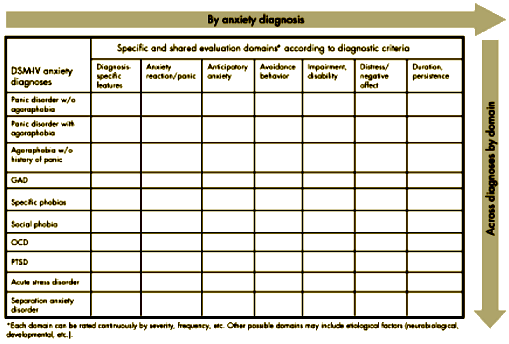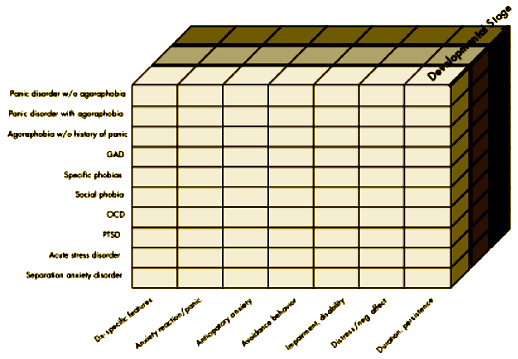
1980 wasn’t just the year that the DSM-III was released, there were lots of other things happening around that time – Ronald Reagan was elected, the IBM PC was released, CNN was launched, the first Star Wars movie, Kim Kardashian’s birth year, John Lennon was murdered, Visicalc was introduced. Visicalc? It was the first spreadsheet program and it ran on the Apple computer. It was a simple two dimensional table with cells that could hold formulas that operated on other cells. With the addition of a graphing function, it became Lotus 1-2-3 and turned the computer from a toy into an invaluable tool. The current incarnation is Microsoft’s Excel. Less well known was a version of Lotus [Improv] that attempted to grow beyond two dimensions, but it was never much used because while we humans might operate in multiple dimensions, it’s hard to visualize and represent. For multidimensional information, we use the ubiquitous database structures where each field is a dimension of a given record. Since we can’t really visualize such a structure all at once, we find our way around using search queries [i.e. the verb to google].
Dimensional approaches to psychiatric classification: refining the research agenda for DSM-V: an introduction
by DARREL A. REGIER MD, MPH
International Journal of Methods in Psychiatric Research. 2007 16:S1–S5.
The American Psychiatric Association [APA] will publish the Diagnostic and Statistical Manual of Mental Disorders, Fifth Edition [DSM-V], in 2012. This paper reviews the extended, multi-faceted research planning preparations that APA has undertaken, several in collaboration with the World Health Organization and the U.S. National Institutes of Health, to assess the current state of diagnosis-relevant research and to generate short- and long-term recommendations for research needed to enrich DSM-V and future psychiatric classifications. This research review and planning process has underscored widespread interest among nosologists in the US and globally regarding the potential benefits for research and clinical practice of incorporating a dimensional component into the existing categorical, or binary, classification system in the DSM. Toward this end, the APA and its partners convened an international conference in July 2006 to critically appraise the use of dimensional constructs in psychiatric diagnostic systems. Resultant papers appear in this issue of International Journal of Methods in Psychiatric Research and in a forthcoming monograph to be published by APA.
While the DSM-5 Task Force is pretty excited about all of this, their descriptions are glamorous but not very clear. Simply put, cross cutting dimensions are multiple fields of observation rather than just the symptom lists we’re used to in the DSMs of yore. So the single score of the HAM-D-17 rating scale actually has 17 dimensions. Here are a few examples of dimensional systems from the monograph they mention:


The usefulness of such a concept is obvious – looking for overlap, pathognomonic [unique] features, comorbidity analysis, unsuspected associations, refining criteria, factor analysis – the sky’s the limit. They should have been doing some such thing all along. The problem is in data gathering. Clinicians are put off by the endless paperwork involved. Even worse, since diagnosis is tied to reimbursement, diagnoses tend to follow reimbursement patterns or allowed treatment prescriptions [shrinks are human too]. So it would have to be a research tool rather than gathered from nature. And arrays of data of this sort are the joy and dream of the obsessive person and tend to expand beyond rational boundaries, so one would likely need to do diagnostic interviews on any investigators involved in cross-cutting dimensional assessment research [be sure to ask about hand washing and alphabetizing DVDs]. Otherwise, one would end up with something like STAR*D became – reams of impenetrable data producing libraries of papers signifying very little if anything. And like much of the DSM-5, cross-cutting dimensional whatevers are a variant of future-think, not of use in the here-and-now – a concept likely to be ignored by actual users.
Speaking of, John Rush is now tweeting on Twitter.
https://twitter.com/Johnrush1960
Maybe the DSM-5 is not a diagnostic manual at all, perhaps it represents an effort to develop, as they say in the high-tech world, a “technology.” Only issue being the content, or lack of it.
Don’t blame the APA for trying to leap into the 21st century.